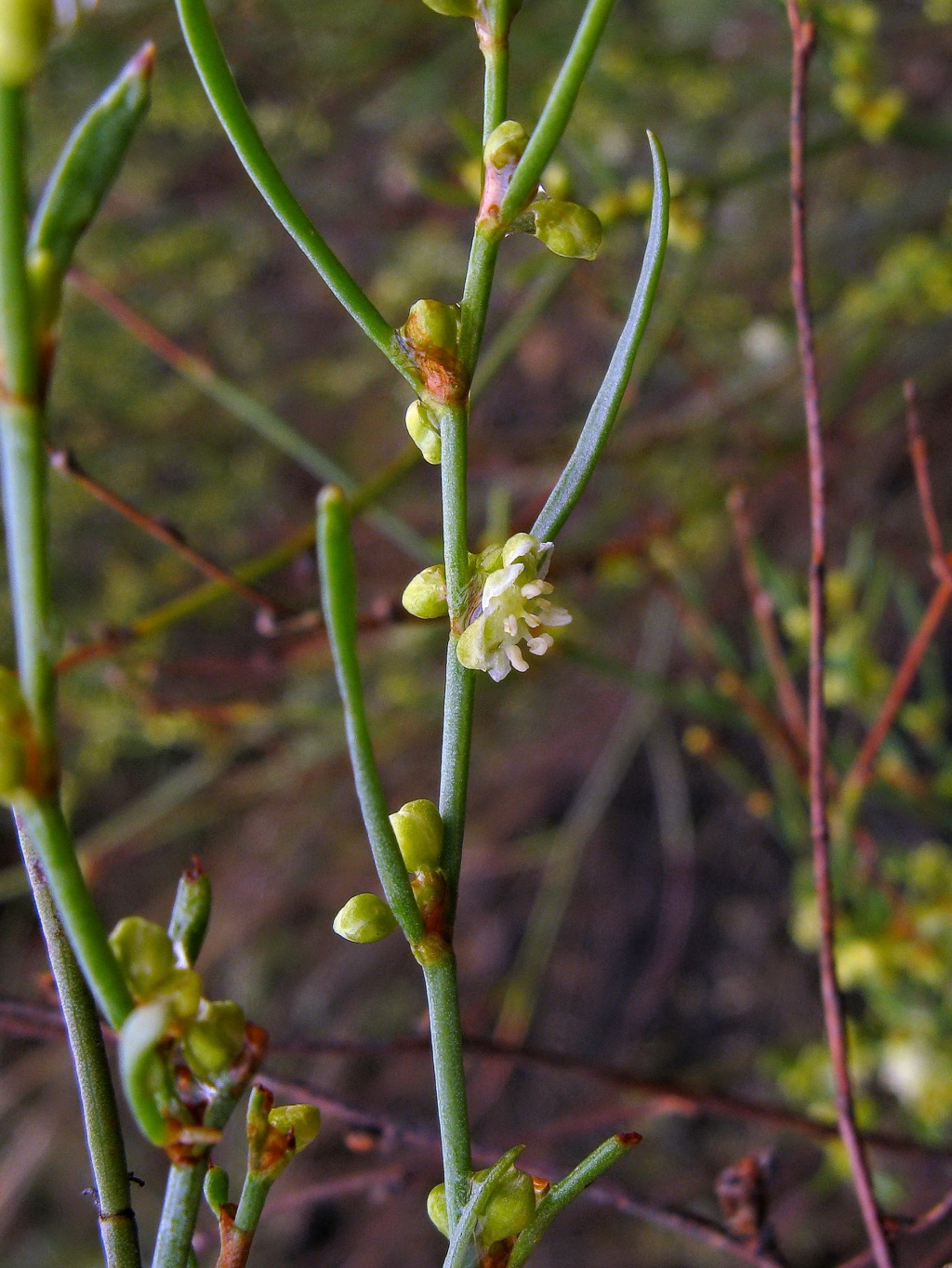Muehlenbeckia
Climbing or scrambling, rarely erect, mostly dioecious subshrubs. Leaves alternate, petiolate or sessile, articulate; ochreas short, tubular, brown, membranous, glabrous, soon disintegrating. Flowers unisexual, in interrupted spike-like inflorescences or in subsessile clusters or solitary at nodes; perianth segments 5, usually sepaloid, green or whitish, usually enlarged and sometimes fleshy in fruit; stamens usually 8 (staminodes present in female flowers); style 3-branched, stigmas flattened, peltately attached, fringed. Nut trigonous or globose, remaining entirely or partly enclosed within fruiting perianth.
A Southern Hemisphere (South America, Australia, New Guinea, New Zealand) genus of c. 19 species; 12 species (all native) in Australia.
Muehlenbeckia complexa Meisn. from New Zealand is commonly cultivated as dense hedging climber, and sometimes persists in old garden sites.
Walsh, N.G. (1996). Polygonaceae. In: Walsh, N.G.; Entwisle, T.J., Flora of Victoria Vol. 3, Dicotyledons Winteraceae to Myrtaceae, pp. 272–295. Inkata Press, Melbourne.
 Spinning
Spinning


